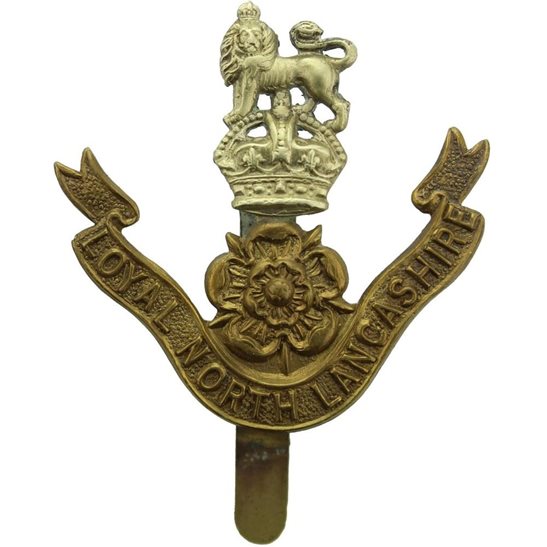Personal Details
Born: 14 November 1898 in Whitchurch, Shropshire.
Family: Charles was the fourth of nine children born to John Newbrook, a blacksmith, and his wife Elizabeth. He married Mary Alice George in 1924. No children can be found for the marriage.
Residence: In 1901 his family were living at 10 Jones`s Yard, Whitchurch, but by 1911 they had moved to 43 Newtown, Whitchurch the address given for him in the 1919 Absent Voters` List. In 1939 Charles and his wife were living at Mossfields Lodge, Whitchurch. At the time of his death in 1972 an address of 8 Queensway, Whitchurch was given for him.
Employment: On his 1915 Attestation his occupation was a groom. In 1939 he was employed as a caretaker and groundsman at Whitchurch Grammar School. He also worked for Whitchurch District Council.
Died: In 1972 at the Royal Shrewsbury Infirmary, Shrewsbury, Shropshire and was buried in Whitchurch cemetery on 8 January the same year, aged 73.
Military Details
Regiment: Loyal North Lancashire Regiment (previously King`s Shropshire Light Infantry)
Rank: Private
Service Number: 28922 (previously 43248 and 17899 in K.S.L.I.)
Date of Enlistment: 3 May 1917
Date of Discharge: 6 March 1919
Reason for Discharge: Not known
Other Information: Charles first enlisted 13 May 1915 (K.S.L.I. service number 17899) but was discharged 15 October 1915 for having made a mis-statement as to age on attestation. His brother William also served In WW1.
Charles was awarded the Campaign Medals (British War Medal, and Victory Medal) and the Silver War Badge (awarded in May 1919).

The British War Medal (also known as 'Squeak') was a silver or bronze medal awarded to officers and men of the British and Imperial Forces who either entered a theatre of war or entered service overseas between 5th August 1914 and 11th November 1918 inclusive. This was later extended to services in Russia, Siberia and some other areas in 1919 and 1920. Approximately 6.5 million British War Medals were issued. Approximately 6.4 million of these were the silver versions of this medal. Around 110,000 of a bronze version were issued mainly to Chinese, Maltese and Indian Labour Corps. The front (obv or obverse) of the medal depicts the head of George V. The recipient's service number, rank, name and unit was impressed on the rim.
The Allied Victory Medal (also known as 'Wilfred') was issued by each of the allies. It was decided that each of the allies should each issue their own bronze victory medal with a similar design, similar equivalent wording and identical ribbon. The British medal was designed by W. McMillan. The front depicts a winged classical figure representing victory. Approximately 5.7 million victory medals were issued. Interestingly, eligibility for this medal was more restrictive and not everyone who received the British War Medal ('Squeak') also received the Victory Medal ('Wilfred'). However, in general, all recipients of 'Wilfred' also received 'Squeak' and all recipients of The 1914 Star or The 1914/1915 Star (also known as 'Pip') also received both 'Squeak' and 'Wilfred'. The recipient's service number, rank, name and unit was impressed on the rim.

The Silver War Badge was issued in the United Kingdom and the British Empire to service personnel who had been honourably discharged due to wounds or sickness from military service in World War I. The badge, sometimes known as the "Discharge Badge", the "Wound Badge" or "Services Rendered Badge", was first issued in September 1916, along with an official certificate of entitlement.

